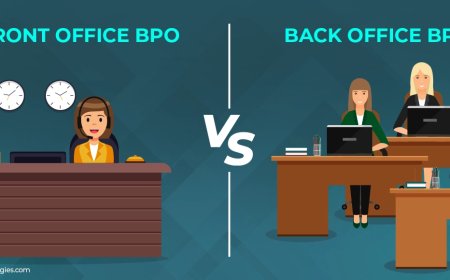How to Protect Your Most Valuable Assets: Your Key People
Safeguard your business from key person loss with insurance, continuity planning, and expert guidance from Insure Your Company.

In any small or mid-sized business, continuity depends heavily on a few individuals. Whether its the founder, a lead revenue producer, or a technical expert, these professionals carry operational knowledge and client relationships that are difficult to replicate. If one of them is lost due to death or long-term disability, the impact can be immediate and severelost contracts, staff turnover, and revenue disruption.
According to the U.S. Small Business Administration, nearly 70% of small businesses say they rely on just one or two people to keep the company functioning. Yet less than a quarter of these businesses have formal protection in place should something happen to those individuals. The resulting gap can put even well-run companies at risk.
The Strategic Risk of Key Personnel Loss
Losing a key person is not only an emotional or logistical issueit is a direct threat to business continuity. Unlike large corporations with multiple departments and redundancies, small enterprises operate with leaner teams. In these environments, institutional knowledge is often concentrated in just a few people.
Some of the primary risks include:
-
Revenue disruption: If a top sales executive or founder is lost, revenue may decline rapidly. Clients may lose confidence and delay or cancel contracts.
-
Increased costs: Recruiting, onboarding, and training a qualified replacement takes time and capital. Business operations can suffer in the interim.
-
Leadership vacuum: The absence of a senior decision-maker can slow down project delivery and affect strategic planning.
-
Debt obligations: If loans or lines of credit are personally guaranteed by the lost individual, creditors may demand immediate repayment.
These are not theoretical risks. Studies show that 40% of businesses never reopen after a major operational disruption. Another 25% fail within one year. In family-owned firms, succession disruptions are a leading cause of long-term decline.
Business Continuity Planning for Key Personnel
The first step to mitigating these risks is implementing a structured business continuity strategy. Business continuity planning for key personnel ensures the company has clear protocols and financial buffers in place to respond effectively if a critical individual can no longer fulfill their role.
Key components of a continuity plan include:
-
Role documentation: Responsibilities, client accounts, key contacts, and operational workflows should be recorded and regularly updated.
-
Cross-training: At least one additional employee should be trained to handle core functions, even at a basic level, in an emergency.
-
Succession protocols: For executive roles, succession procedures should be documented and agreed upon by stakeholders.
-
Financial safeguards: Insurance solutions, particularly key person life insurance, provide the liquidity needed to bridge the transition period.
In high-functioning organizations, these elements are reviewed annually and integrated into the companys broader risk management plan.
The Role of Key Person Life Insurance
One of the most effective tools for financial continuity is key person life insurance for small businesses. This policy is owned by the business and insures the life of a key employee. If the insured individual dies or becomes permanently disabled, the business receives a lump-sum payout.
This financial resource can be used to:
-
Offset lost revenue
-
Cover ongoing operating expenses
-
Fund recruitment and training for a replacement
-
Satisfy debt obligations
-
Maintain investor and lender confidence
Importantly, key person insurance is not designed to benefit the employees family, it is intended to protect the company from operational loss. When properly structured, it acts as a financial buffer, giving leadership time and resources to recover.
Protecting Key Employees with Business Insurance
The goal of protecting key employees with business insurance is not just to prepare for worst-case scenarios, but to demonstrate resilience to all stakeholdersemployees, clients, banks, and investors. When a business shows that it has safeguarded its critical functions, it builds trust and credibility.
Many lenders and equity investors now expect key personnel to be insured as a condition of funding. Similarly, clients in professional services, engineering, and healthcare increasingly request continuity assurances in service-level agreements. Without such coverage, the business risks reputational damage in addition to operational setbacks.
Choosing the Right Provider
Selecting an insurance partner for this type of coverage requires more than comparing premiums. Businesses should work with providers who understand operational risk, business valuation, and how to align coverage with continuity objectives.
Today, many companies rely on top insurance providers like Tymon Global, which specialize in key person risk management for small and mid-sized enterprises. These providers offer not only competitive policies but also advisory services to help companies evaluate which roles to insure, how much coverage is appropriate, and how to integrate policies with succession plans.
By working with an expert provider, businesses can avoid underinsuring or overcommitting and instead tailor their coverage to reflect actual risk exposure.
Integrating Coverage into Strategic Planning
Once coverage is in place, it should not be treated as static. As the business evolves, whether through expansion, restructuring, or market shifts the roles of key personnel may change. Coverage levels, beneficiary designations, and continuity protocols should be reviewed periodically to ensure alignment.
It is also important to revisit coverage when onboarding new leadership. Executives joining a growth-stage business may expect that appropriate insurance is already in place, particularly if their role involves equity, long-term incentives, or strategic oversight.
Assess and Strengthen Your Strategy
Business continuity is a central responsibility of leadership. While many organizations prioritize cybersecurity, compliance, and supply chain management, too few account for the operational fragility that comes with losing a key person. The reality is that human capital is one of the most valuable assets in any company.
By proactively engaging in business continuity planning for key personnel and implementing tools such as key person life insurance for small businesses, companies can protect themselves from severe financial and operational fallout. These strategies are not merely defensive, they signal to all stakeholders that the business is professionally managed, forward-thinking, and built to endure.
Organizations that recognize the strategic importance of protecting key employees with business insurance stand to gain more than risk reduction, they gain the confidence of clients, partners, and investors.
For businesses assessing their exposure, working with experienced providers like Tymon Global can offer the clarity, guidance, and customized protection necessary to ensure long-term stability, no matter what the future holds.
Visit InsureYourCompany.com or get in touch by scheduling a demo to get started. Our experts will guide you through every step.



































